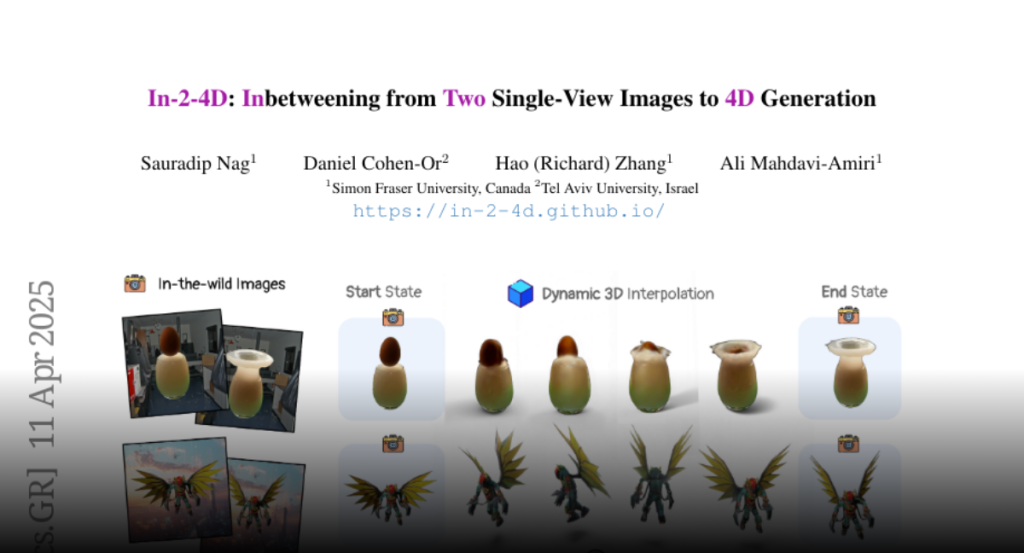We propose a new problem, In-2-4D, for generative 4D (i.e., 3D + motion)
inbetweening from a minimalistic input setting: two single-view images
capturing an object in two distinct motion states. Given two images
representing the start and end states of an object in motion, our goal is to
generate and reconstruct the motion in 4D. We utilize a video interpolation
model to predict the motion, but large frame-to-frame motions can lead to
ambiguous interpretations. To overcome this, we employ a hierarchical approach
to identify keyframes that are visually close to the input states and show
significant motion, then generate smooth fragments between them. For each
fragment, we construct the 3D representation of the keyframe using Gaussian
Splatting. The temporal frames within the fragment guide the motion, enabling
their transformation into dynamic Gaussians through a deformation field. To
improve temporal consistency and refine 3D motion, we expand the self-attention
of multi-view diffusion across timesteps and apply rigid transformation
regularization. Finally, we merge the independently generated 3D motion
segments by interpolating boundary deformation fields and optimizing them to
align with the guiding video, ensuring smooth and flicker-free transitions.
Through extensive qualitative and quantitiave experiments as well as a user
study, we show the effectiveness of our method and its components. The project
page is available at https://in-2-4d.github.io/

